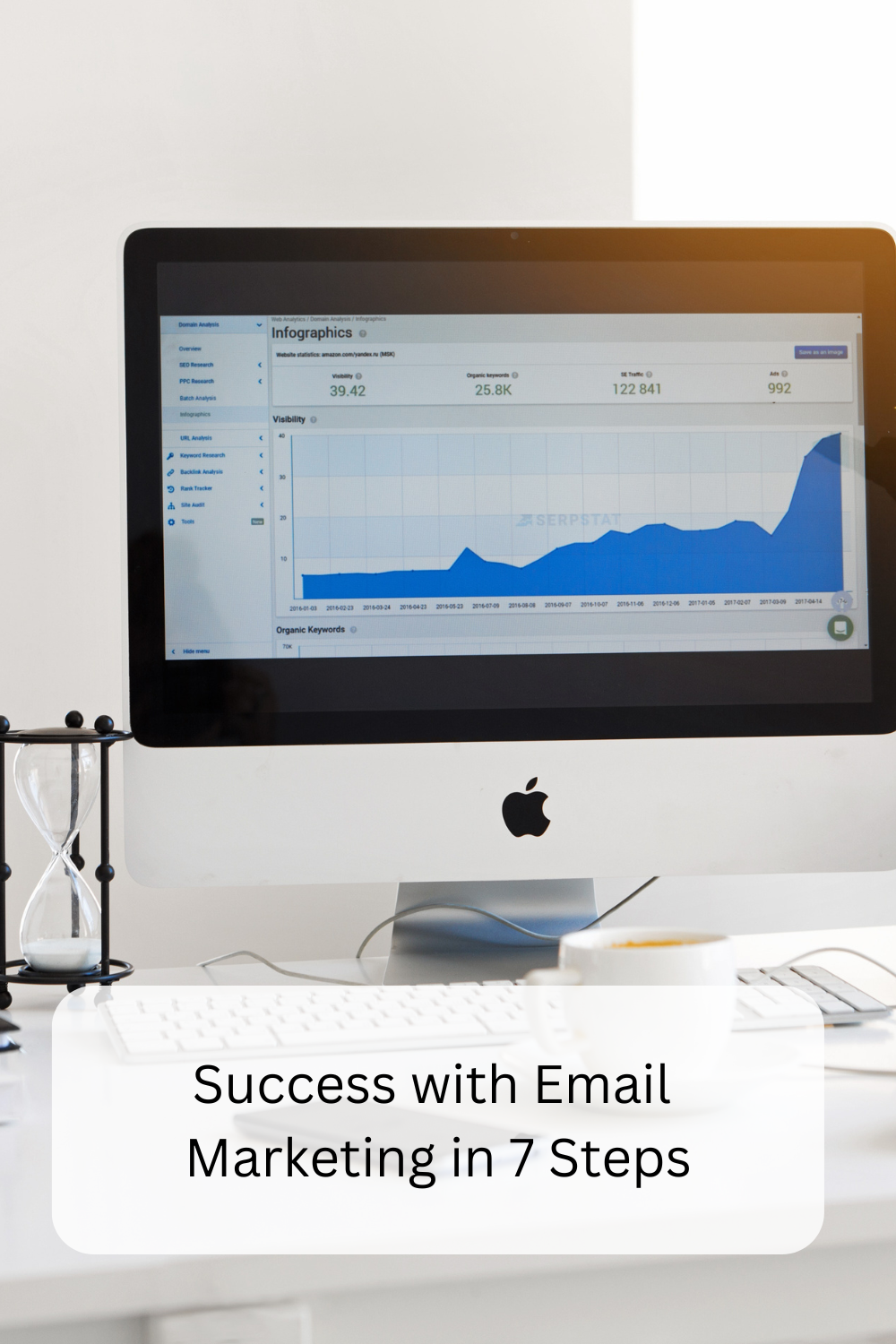Imagine you build a successful blog. Your blog gets a lot of visitors, and you can quit your job with the money you earn and work full-time on it.
Then Google comes up with a big update, and practically overnight, your blog is no longer displayed at the top of Google, and you only get a fraction of the visitors.
And with that, your earnings also plummet. This means your self-employment is at risk of ending before it has even begun.
What if you hadn’t relied on Google alone from the start but had also built up an email list?
Then, you could increase your visitors’ trust through meaningful email marketing (and thus your sales) and protect yourself from Google updates.
Incidentally, this does not only apply to Google updates. A social media profile can be banned, and advertising platforms can block the account.
That’s why email marketing should always be the basis for every online business.
Email marketing can help you promote products or new items and build customer relationships. Building an email list should be your most important task.
And email marketing is not that hard. In this article, I’ll show you how to build your email marketing in seven steps.
Step 1 – The Email Marketing Tool
The email marketing tool is the foundation of your email marketing campaign. You should be able to create newsletters and autoresponders with your email marketing tool. Of course, additional functions are always helpful.
There are many different tools with different prices. The email marketing tool I can highly recommend is Aweber. Aweber offers a range of different features and is easy to use.
There are also free tools, but I wouldn’t recommend them. They might be better for a start, but the other tools are better if you have a larger list. Then you have the huge hassle of changing your provider, so you better choose the right tool from the start.
Step 2 – The opt-in box tool
Of course, an email marketing tool isn’t enough on its own. People need a way to sign up for your email list, so you need some kind of opt-in box. You can create a landing page or place sign-up boxes on your website.
This is easier than it sounds. You must create an opt-in box in your email marketing tool and insert the corresponding code into a text widget in WordPress. Now, you have an opt-in box where people can sign up.
Alternatively, you can, of course, create a landing page. Here, you can use either ClickFunnels or Systems.IO.
Step 3 – The bait
No one gives away their email address for free, so you have to make them an offer for which they are willing to give you their email address. This is called a “freebie.”
Your free offer can be
- a PDF report
- a coupon
- a case study
or anything else your customer will give their email address for.
Think about your target audience’s biggest concerns and how you could easily solve them.
Step 4 – The presentation
It doesn’t matter whether you have a landing page or a registration box on your blog. Just having a small reference to your newsletter is not enough.
As mentioned earlier, you can use your email marketing tools to create sign-up boxes and place them on the right-hand side of your blog.
It is important that you present your free offer here. A compelling headline, perhaps the product cover, and a call to action are the right ingredients.
Step 5 – The first emails
When you collect email addresses, you should not stop there. With the help of autoresponders, you can send automated follow-up emails. For example, you can send them your most-read articles that might be helpful to them.
I would suggest sending them about seven emails in two weeks. This isn’t too much to annoy them with you, but it’s enough to build a relationship.
Step 6 – Traffic
The best freebies and emails are nothing without leads. And you can’t get leads without traffic. Traffic should be your top priority when building an email list.
There are many different traffic sources, but you can distinguish between organic and paid traffic. Organic traffic sources are, for example, SEO or social media. Paid traffic can be found via Facebook Ads or Google Ads. Of course, you should always get high-quality traffic interested in your freebie.
Step 7 – Sustainability
To ensure your readers don’t forget you, you must send a newsletter regularly.
Newsletters are not the same as autoresponders because newsletters are always sent at a specific time, regardless of the registration date.
These can then be based on current topics, for example (“Are you also a World Cup fan?”)
Even if you think it’s too much work for this small number of leads. But the first leads can also be your best leads 🙂
Conclusion
If you haven’t started email marketing yet, stop what you’re doing and start today! Email marketing can make the difference between making small and big money.
Above all, it insulates you from external factors and brings more security to your business.
Now I want to hear from you!
Do you use email marketing? Is it missing a step, or is it too many? I’d love to hear your thoughts, so please leave a comment below 🙂

